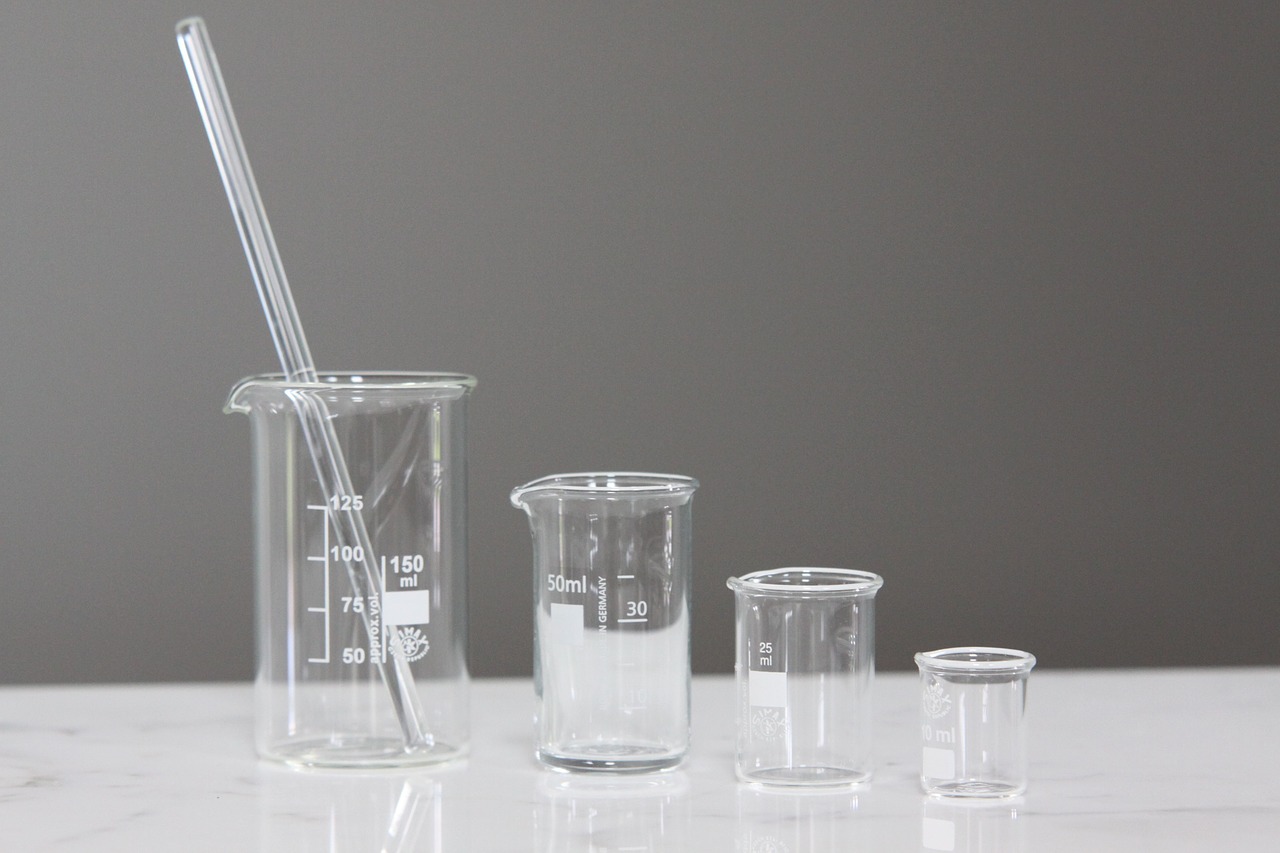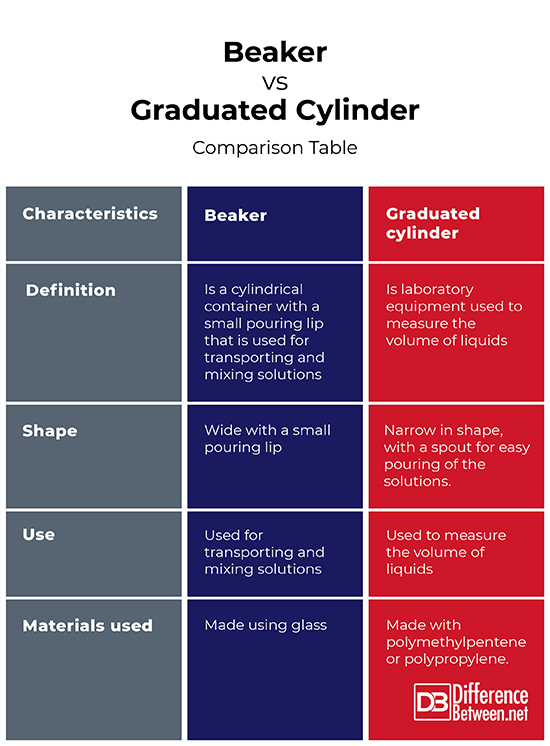Difference Between Beaker and Graduated Cylinder
Through experiments, human beings have been able to come up with measures and even solutions to many life problems. These experiments are carried out in the laboratories, and involve the use of chemicals and biological analysis. For the experiments to be carried in a safe and ideal way, apparatus, specifically for that purpose, is used. These apparatus can withstand high temperatures and corrosive material. They include burets, beakers, pipets, and graduated cylinders, just to mention a few.

What is a Beaker?
This is a cylindrical container with a small pouring lip that is used for transporting and mixing solutions. They can be made with glass, metal, and even certain plastics. They are graduated to assist in obtaining an exact measurement of a solution. Although beakers do not have a lid, they can be covered with a watch glass or a larger beaker when need be. They are available in a wide range of sizes from as small as one milliliter to a few liters.

What is a Graduated Cylinder?
Also referred to as measuring or mixing cylinder, a graduated cylinder is a piece of laboratory equipment used to measure the volume of liquids. It is narrow in shape, with a spout for easy pouring of the solutions. It is also marked to show the level of liquids. Graduated cylinders are made with polymethylpentene or polypropylene. While polymethylpentene is mainly used for its transparency, less fragility, and its lightweight, polypropylene may be used due to its high level of chemical resistance. In terms of measuring liquids, graduated cylinders are more accurate in comparison to other laboratory apparatus as they are marked with small and precise graduations.
Similarities between Beaker and Graduated Cylinder
- Both are used in the laboratories
Differences between Beaker and Graduated Cylinder
-
Definition
A beaker is a cylindrical container with a small pouring lip that is used for transporting and mixing solutions. On the other hand, a graduated cylinder is laboratory equipment used to measure the volume of liquids.
-
Shape
While a beaker is wide and has a small pouring lip, a graduated cylinder is narrow in shape, with a spout for easy pouring of the solutions.
-
Use
A beaker is used for transporting and mixing solutions. On the other hand, a graduated cylinder is used to measure the volume of liquids.
-
Materials used
While beakers are mainly made using glass, graduated cylinders are made with polymethylpentene or polypropylene.
Beaker vs. Graduated cylinder: Comparison Table

Summary of Beaker vs. Graduated Cylinder
The importance of various laboratory apparatus cannot be ignored. This is due to the fact that they provide safe working conditions even in instances where dangerous chemicals are used. While beakers are used for transporting and mixing solutions, graduated cylinders are used to measure the volume of liquids.
- Difference Between Profit Center and Investment Center - July 2, 2022
- Difference Between Anti-Trust and Anti-Competition - June 6, 2022
- Difference Between Stocktaking and Stock Control - June 6, 2022
Search DifferenceBetween.net :
Leave a Response
References :
[0]Image credit: https://commons.wikimedia.org/wiki/File:Glass_graduated_cylinder-250ml_1.jpg
[1]Image credit: https://pixabay.com/es/photos/vaso-de-precipitados-1465437/
[2]Reynolds A & Estridge B. Basic Clinical Laboratory Techniques. Cengage Learning Publishers, 2011. https://books.google.co.ke/books?id=OYsKAAAAQBAJ&pg=PA81&dq=functions+of+%5D+beaker+and+graduated+cylinder&hl=en&sa=X&ved=0ahUKEwjS_ubkt-3gAhV95-AKHcBGDsQQ6AEILDAB#v=onepage&q=functions%20of%20%5D%20beaker%20and%20graduated%20cylinder&f=false
[3]Mukherjee, McGraw-Hill Education. Med Lab.Technology, Volume 1. Tata McGraw-Hill Education Publishers, 2000. https://books.google.co.ke/books?id=lc1sEUnsRH0C&pg=PA57&dq=Basic++Laboratory+apparatus&hl=en&sa=X&ved=0ahUKEwiC_aClue3gAhUK2eAKHS0RAe4Q6AEIMDAC#v=onepage&q=Basic%20%20Laboratory%20apparatus&f=false
[4]Landesberg J. Basic Laboratory Experiments for General, Organic, and Biochemistry. Cengage Learning Publishers, 2014. https://books.google.co.ke/books?id=4eIbCgAAQBAJ&pg=PR4&dq=Basic++Laboratory+apparatus&hl=en&sa=X&ved=0ahUKEwiC_aClue3gAhUK2eAKHS0RAe4Q6AEIQjAF#v=onepage&q=Basic%20%20Laboratory%20apparatus&f=false
